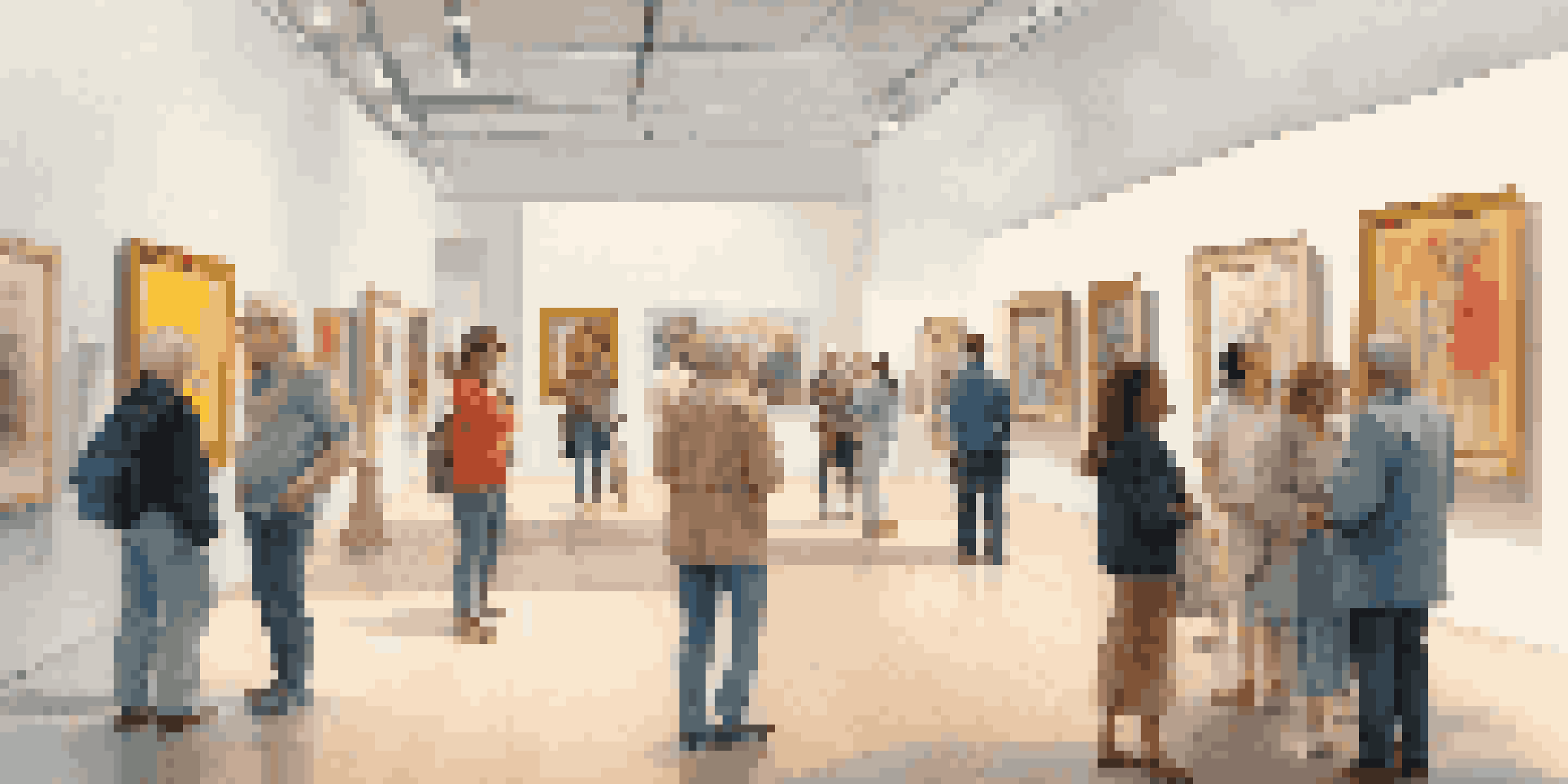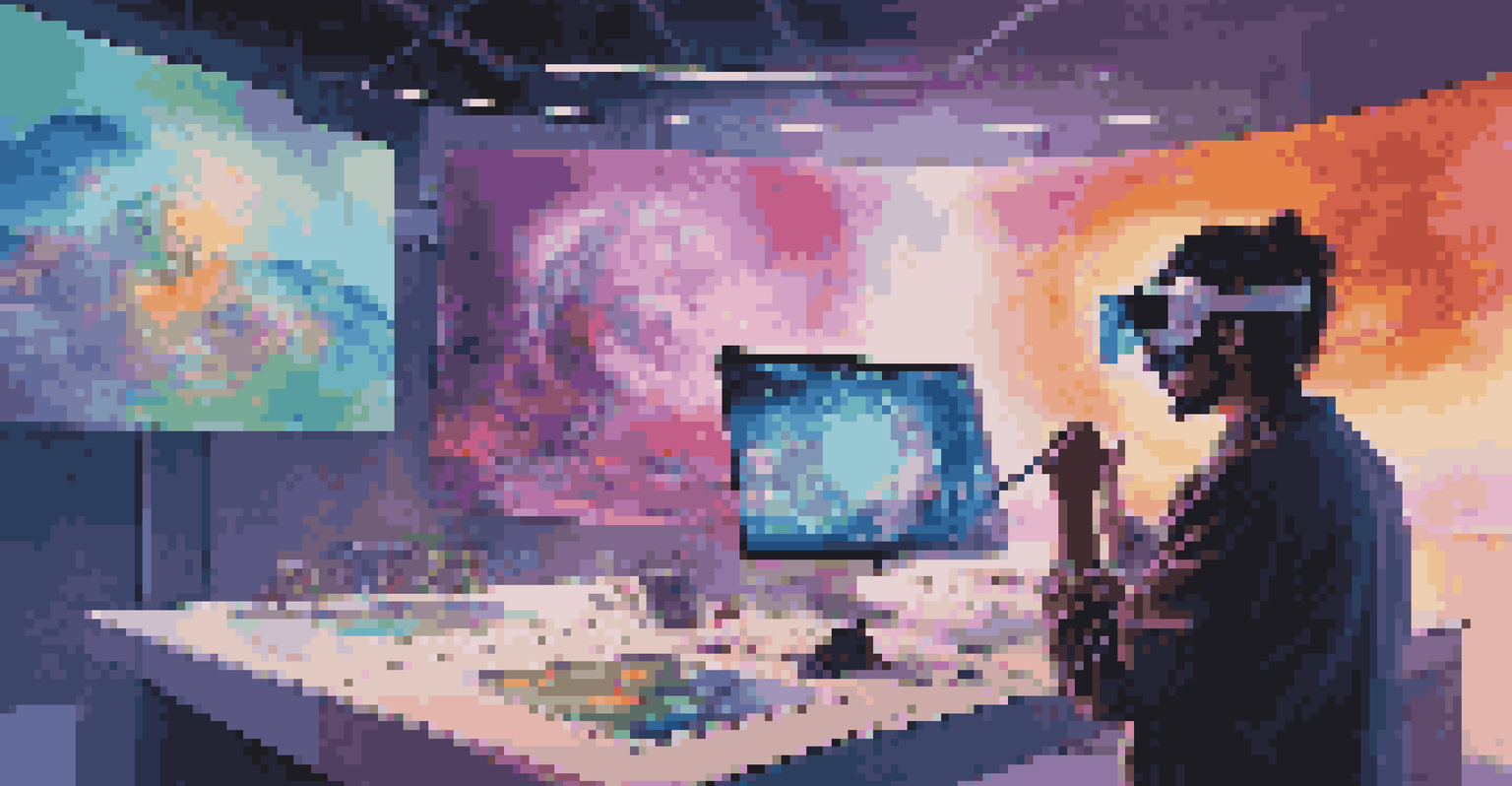The Influence of Art Criticism on Market Trends

Understanding Art Criticism: A Gateway to the Market
Art criticism serves as a vital form of dialogue between artists and audiences. It helps to contextualize artworks within cultural, historical, and personal frameworks. By interpreting and analyzing art, critics offer insights that can elevate public understanding and appreciation.
Art is the most beautiful of all lies; it is the most beautiful way of expressing the truth of our lives.
This dialogue plays a crucial role in shaping perceptions, which ultimately influences market trends. For instance, when a respected critic praises an emerging artist, it can lead to increased interest and demand for their work. The visibility gained through criticism can be a catalyst for an artist's commercial success.
Moreover, criticism can also guide collectors and investors by providing valuable assessments of an artwork's potential value. This guidance not only helps in making informed decisions but also helps in curating collections that may appreciate over time.
The Role of Critics in Shaping Artist Reputation
Critics have the power to shape an artist's reputation, often determining their trajectory in the market. A positive review can launch an artist into the limelight, while a negative one can hinder their visibility. This influence is particularly pronounced for emerging artists seeking recognition.

For example, consider a contemporary painter whose work has gone unnoticed. A glowing review from a prominent critic can spark interest, leading to gallery shows and increased sales. Conversely, a lack of coverage or a critical review can stall an artist’s momentum.
Art Criticism Shapes Market Trends
Critics play a crucial role in influencing public perception and market demand for artworks.
Thus, the relationship between critics and artists is symbiotic; while critics help to shape reputations, artists provide the material that fuels criticism. This dynamic is essential for the evolution of the art market.
Market Trends: Driven by Criticism and Public Perception
Art markets are often swayed by public perception, which is heavily influenced by criticism. When critics highlight specific movements or styles, they can effectively create trends that collectors and investors follow. This ripple effect can lead to a surge in demand for certain types of artwork.
Criticism, like rain, should be gentle enough to nourish a man's growth without destroying his roots.
For instance, the resurgence of interest in abstract expressionism was partly fueled by critical reassessments of its significance. This newfound appreciation drove up prices at auctions and galleries, illustrating how art criticism can directly impact market values.
Critics not only inform collectors but also engage with the general public, shaping broader trends in taste and preference. As public interest shifts, so too does the market, demonstrating the delicate interplay between criticism and market dynamics.
The Digital Age: New Platforms for Art Criticism
With the rise of the internet and social media, art criticism has evolved into a more accessible and immediate form. Online platforms allow critics to share their thoughts and reviews with a global audience, amplifying their influence. This democratization of criticism enables diverse voices to emerge.
For example, art blogs and social media accounts dedicated to reviewing art can quickly gain traction, impacting how certain artists are perceived. An artist who goes viral on platforms like Instagram can see their work's value soar, often linked to the commentary surrounding it.
Critics Impact Artist Reputation
Positive or negative reviews from critics can significantly affect an artist's visibility and career trajectory.
However, this shift also means that not all criticism holds the same weight. The challenge for artists and collectors alike is to discern which voices in the digital realm are credible and influential. This landscape requires a nuanced understanding of who shapes trends and how.
Balancing Subjectivity: The Critic's Influence vs. Personal Taste
Art criticism is inherently subjective, reflecting the critic's personal taste and experiences. This subjectivity can both enrich and complicate the market, as different critics may have vastly different opinions on the same piece of art. Collectors often find themselves navigating these diverse perspectives.
For instance, one critic might champion a contemporary installation while another dismisses it as irrelevant. Such differing opinions can create a landscape of confusion for buyers trying to determine an artwork's true value. This complexity underscores the importance of engaging with multiple sources of criticism.
Ultimately, personal taste plays a significant role in the art market. While critics can influence trends, individual preferences will always shape buying decisions, highlighting the delicate balance between external opinions and internal inclinations.
The Impact of Major Exhibitions and Criticism
Major art exhibitions often serve as focal points for criticism and market activity. Events like the Venice Biennale or Art Basel attract international attention, drawing critics, collectors, and the public alike. The reviews that emerge from these events can significantly impact artists' careers and market trends.
For example, an artist showcased at a prestigious exhibition who receives positive critical acclaim can see an immediate boost in their market value. This phenomenon illustrates how closely intertwined exhibitions and criticism are in shaping the art landscape.
Digital Age Transforms Criticism
The rise of online platforms has democratized art criticism, allowing diverse voices to influence how art is perceived.
Moreover, these events often set the tone for upcoming trends and styles. Critics' observations and discussions during such exhibitions can influence what collectors seek in the following months or years, showcasing the profound impact of criticism in a concentrated setting.
Future Trends: The Evolving Landscape of Art Criticism
As the art market continues to evolve, so too does the realm of art criticism. With emerging technologies such as virtual reality and AI, the way we engage with and critique art is changing. Critics must adapt to these innovations while maintaining their core role of interpretation and analysis.
Additionally, the increasing emphasis on inclusivity in the art world is prompting a broader range of voices to emerge in criticism. This shift can lead to a more diverse array of perspectives and evaluations, enriching the dialogue around art and its market.

As we look to the future, it will be fascinating to see how these changes impact the relationship between art criticism and market trends. The ongoing conversation will undoubtedly continue to shape the value and perception of art in meaningful ways.